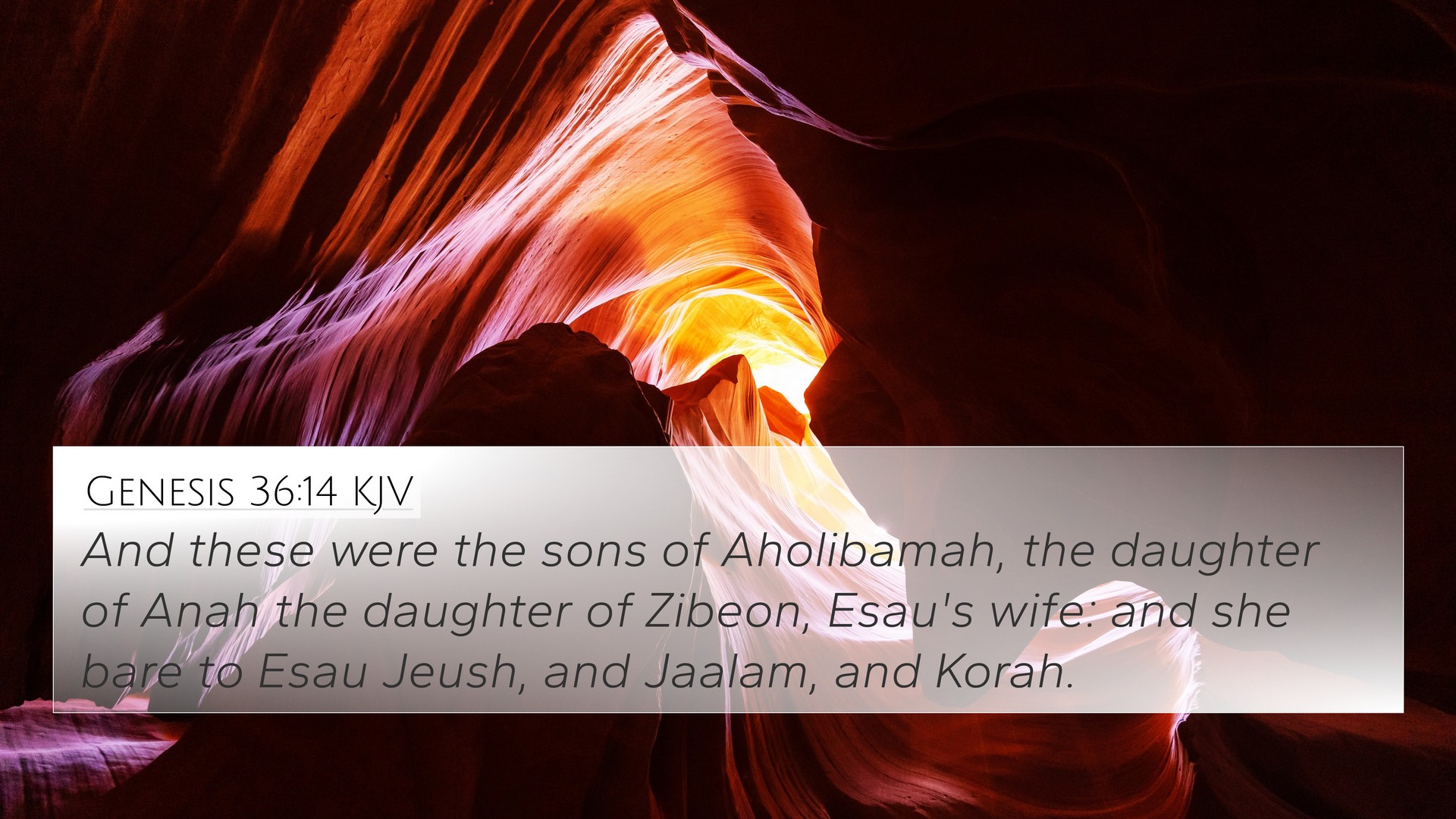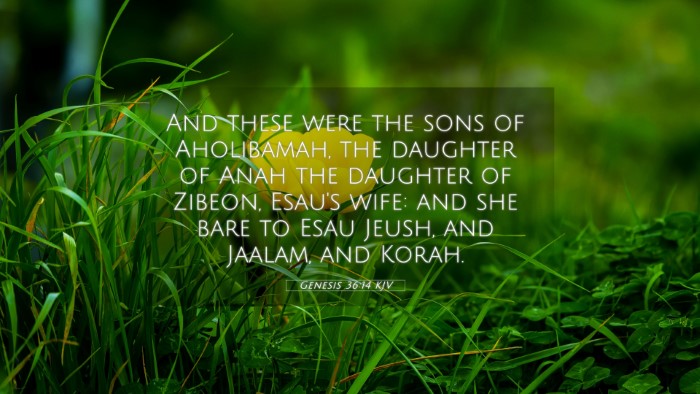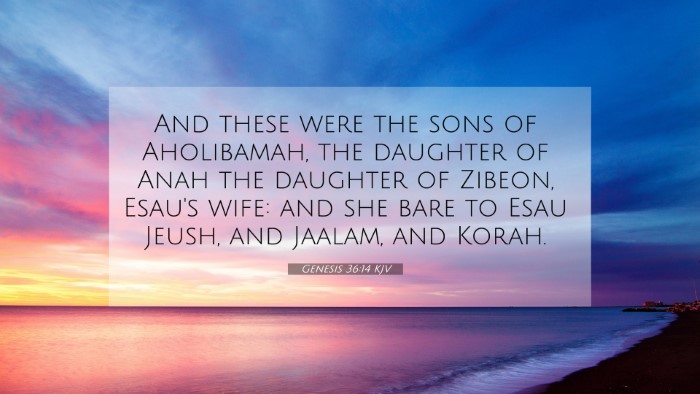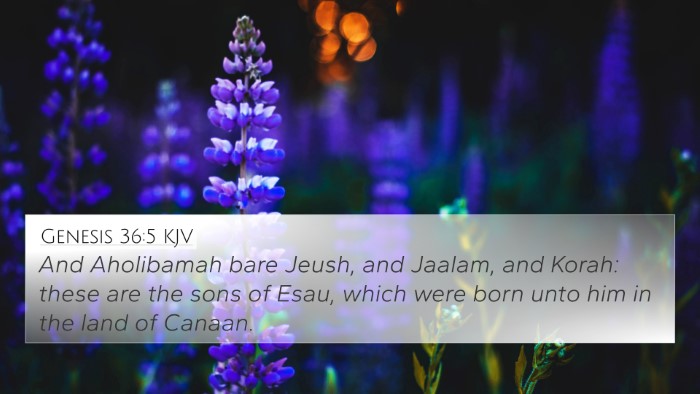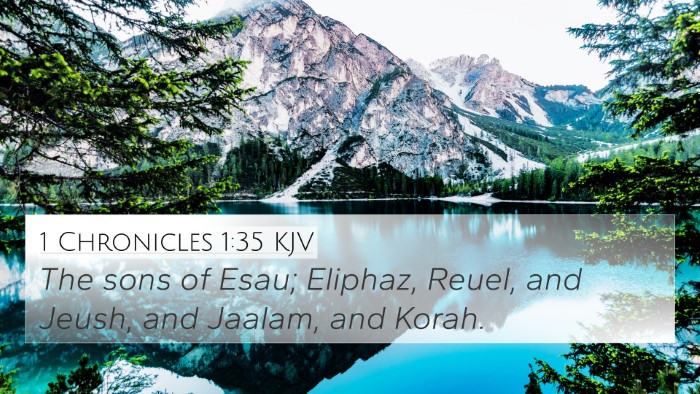Bible Verse Analysis: Genesis 36:14
Genesis 36:14 describes the lineage of Esau's descendants, highlighting the family ties and tribal associations of the Edomites. This verse contributes to the larger narrative of the Old Testament, especially regarding God's promises and the historical context of Israel's neighbors.
Understanding Genesis 36:14
In this verse, we see the mention of Esau’s sons, including Eliphaz and Reuel, who are key figures in the descendants of Esau. From a thematic perspective, this verse illustrates God's intention in preserving the lineage and fulfilling His covenant with Abraham through Isaac and Esau's line.
Insights from Commentaries
- Matthew Henry: Henry remarks on how Genesis 36:14 serves as an indication of God's providence in history. The verse emphasizes that even though Esau was not the chosen line to carry the covenant through Jacob, his descendants are still included in God's redemptive history.
- Albert Barnes: Barnes adds that the listing of Esau's descendants is critical for understanding the Edomite nation. He emphasizes the tribes formed and their significance in later Biblical events, showcasing their interactions with Israel.
- Adam Clarke: Clarke discusses the cultural and historical implications of Esau's lineage, noting how it reflects the broader narrative of familial tensions and the sovereignty of God in determining the lineage that would ultimately lead to Jesus Christ.
Thematic Connections with Other Bible Verses
Genesis 36:14 links to various other passages that enhance our understanding of biblical genealogies and the dynamics between different nations:
- Genesis 25:24-26: The birth of Esau and Jacob, starting the narrative of their tumultuous relationship.
- Numbers 20:14-21: An example of the Israelites' interactions with the Edomites.
- Deuteronomy 2:4-5: God's command regarding Edom, illustrating the special relationship between Israel and Edom.
- Obadiah 1:10-14: A prophetic view of the downfall of Edom due to its antagonism towards Israel.
- Malachi 1:2-3: God’s perspective on the Edomites in contrast to Israel, emphasizing His sovereign choice.
- Hebrews 12:16: A reference to Esau's character and his decisions affecting his lineage, shedding light on his legacy.
- Romans 9:13: The quote about Jacob and Esau demonstrates God’s sovereign choosing within familial lines.
Applications and Reflections
When exploring Genesis 36:14, readers are encouraged to consider:
- God's Sovereignty: The verse illustrates the divine oversight in the unfolding of history, reminding us that every lineage plays a part in God’s greater plan.
- Inter-Biblical Dialogue: The connections made through cross-references reveal God's consistent character and the unfolding mystery of salvation history.
- Lessons on Family Dynamics: The genealogies show both conflict and reconciliation within family lines, serving as a metaphor for managing relational complexities in our lives.
Tools for Bible Cross-Referencing
For those keen on exploring more about linking Bible scriptures, here are some helpful resources:
- Bible Concordance
- Bible Cross-Reference Guide
- Cross-Reference Bible Study
- Bible Reference Resources
- Bible Chain References
Conclusion
Genesis 36:14, while a seemingly straightforward genealogical reference, opens the door to deeper theological discussions. Through comparative Bible verse analysis and thematic Bible verse connections, we understand more about the complexities of familial relationships and God's redemptive work throughout history.
Further Research
As you continue your study of Genesis and its cross-references, remember to consider:
- How does this verse relate to New Testament teachings?
- What additional insights can be gathered from the surrounding chapters?
- How do the stories of Esau and Jacob reflect on our own lives today?
